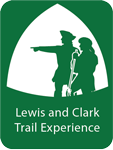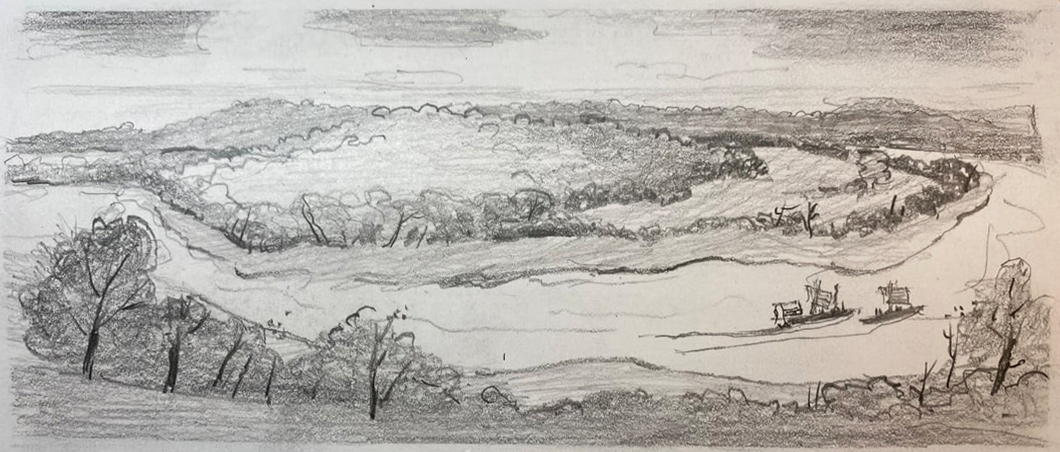On or near this date, the expedition passes the Blue River Hills and goes around the big bend of the Ohio near present Leavenworth, Indiana. The bends in this area are twenty miles long by water but only six miles by land.
Big Bend, Ohio R.
Leavenworth, Indiana
From the sketchbook of Steve Ludeman
Colorized from an original sketch by Steve Ludeman © 30 August 2022, www.steveludemanfineart.com. Used by permission.
Winding River
At sundown we called at a settlement on Kentucky shore and got pint of cream and 3 cabbages. The woman told us that it was 20 miles by water and only 6 by land.
—Thomas Rodney (21 October 1803)[1]Dwight L. Smith and Ray Swick, ed., A Journey Through the West: Thomas Rodney’s 1803 Journal from Delaware to the Mississippi Territory (Athens: Ohio University Press, 1997), 129.
Blue River Hills
[C]ame to Blue river, on the right, fifty yards wide.
The river hills, which are generally a considerable distance behind the banks below Louisville, now approached quite close on each side.
—Fortescue Cuming (1807)[2]Fortescue Cuming, Sketches of a Tour to the Western Country: Through the States of Ohio and Kentucky, a voyage down the Ohio and Mississippi rivers, and a trip through the Mississippi territory, and … Continue reading
Experience the Lewis and Clark Trail
The Lewis and Clark Trail Experience—our sister site at lewisandclark.travel—connects the world to people and places on the Lewis and Clark Trail.
Plan a trip related to October 28, 1803:

Notes
| ↑1 | Dwight L. Smith and Ray Swick, ed., A Journey Through the West: Thomas Rodney’s 1803 Journal from Delaware to the Mississippi Territory (Athens: Ohio University Press, 1997), 129. |
|---|---|
| ↑2 | Fortescue Cuming, Sketches of a Tour to the Western Country: Through the States of Ohio and Kentucky, a voyage down the Ohio and Mississippi rivers, and a trip through the Mississippi territory, and part of West Florida, commenced at Philadelphia in the winter of 1807 . . . (Pittsburgh: Cramer, Spear, & Eichbaum, 1810), 237. |

